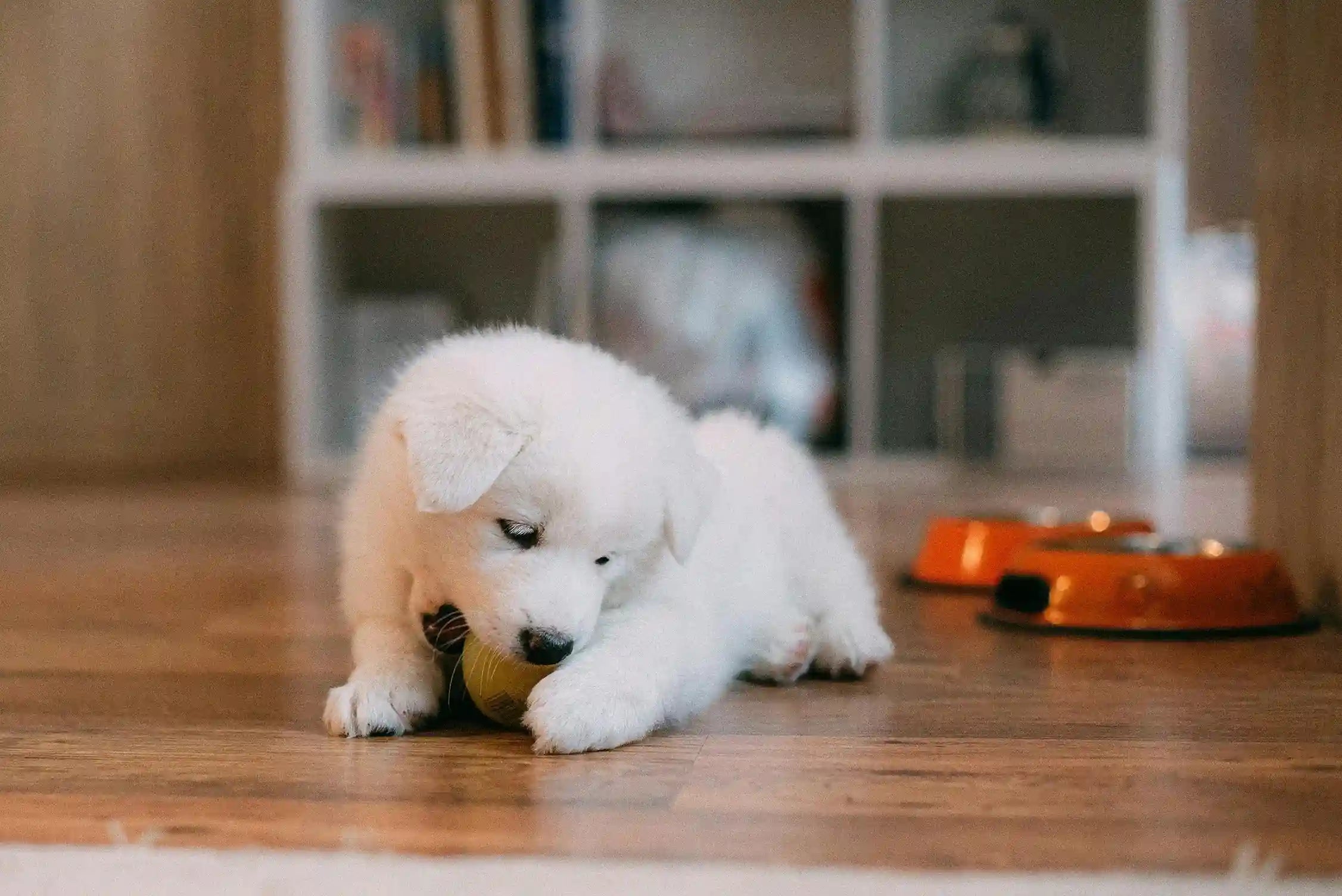Bringing a new puppy home is full of cuddles, tail wags, and the occasional chewed-up slipper. But while the early weeks can be chaotic, a bit of training and some dog products from Closer Pets can go a long way in turning your excitable ball of fluff into a well-behaved companion. Read our guide below for all the dog training tips for puppies you’ll ever need.
1. Start training early
Step one in how to train a puppy: the sooner you start, the easier it will be to shape their behaviour. Young puppies are like little sponges: open to learning, eager to please, and not yet set in their ways. That’s why people say that it’s old dogs you can’t teach new tricks.
2. Use positive reinforcement
Positive reinforcement means rewarding your puppy when they do something you like. It might sound like bribery, but it’s rooted in real behavioural science: when a behaviour leads to a pleasant outcome, that behaviour is more likely to happen again. It’s how all animals learn, from goldfish to guide dogs. The reward doesn’t have to be food: play, praise, freedom to explore, or even a tug toy can all be powerful motivators, depending on your dog. But what really matters is timing: reward the behaviour as it happens, so your puppy understands precisely what they’re being rewarded for.
3. Use a clicker
A clicker is a small plastic tool that makes a consistent, distinct sound; a sound that doesn’t come up anywhere else in your dog’s day-to-day life. And it’s easily the most powerful tool you can use to train a dog.
When you’re using positive reinforcement of any kind, you click the clicker at the same time. Your puppy then comes to associate the behaviour, the reward, and the sound of the click. That distinctive sound becomes a marker they recognise as “Yes! That’s what I was supposed to do”, and over time, they’ll start offering good behaviour all on their own.
4. Don’t use negative reinforcement
Slapping or hitting your dog, rubbing your puppy’s nose in its mess, or any other kind of punishment-based training isn’t just mean. It doesn’t work.
The problem with it is that negative reinforcement teaches dogs what to avoid but not what to do instead. Yanking a lead or shouting when your puppy won’t stop barking might interrupt them in the moment, but it won’t teach the behaviour you'd prefer.
5. Keep training sessions short
Puppy brains get tired quickly. Try teaching a new behaviour for fifteen minutes, and you’ll lose their focus after five. Training works best in short bursts: five to ten minutes at a time, two or three times a day. That frequency helps reinforce what they’re learning without overwhelming them.
6. Teach “sit” first
“Sit” is a foundational behaviour because it naturally stops a whole host of others. A sitting puppy isn’t jumping, barking, pulling, or dashing out the door after all! Plus, it’s easy to teach.
Start with a treat held just above their nose, then slowly lift it back over their head. When they tip their head to follow, their bum will usually drop. Mark that process with a click or a “yes,” then reward. Repeat a few times, add the word “sit” just before they do it, and hey presto, your dog can sit!
7. Redirect chewing behaviours
Puppies are like toddlers; they explore the world with their mouths. They’re not being naughty when they chew, because chewing relieves teething pain and boredom, and it’s deeply instinctual. But what is up to you is what they chew. Don’t just say “no” when your puppy latches onto your shoe; interrupt gently and offer them something more suitable, such as a textured chew toy. Every time you redirect successfully, you’re teaching them what’s allowed.
8. Introduce new things gradually
Socialisation isn’t about throwing your puppy into every possible scenario; it’s about building positive associations with the unfamiliar. New dogs, new people, noisy bins, cars, hoovers, kids, and bikes – all of these can be overwhelming without slow introductions. Watch your puppy’s body language: ears back, tail tucked, licking lips? That’s a cue to slow down. Give them space, let them observe, and pair new experiences with rewards.
9. Ignore unwanted attention-seeking
If barking, pawing, or jumping consistently gets them the attention they’re craving, they’ll keep doing it. The trick isn’t to punish the behaviour but to remove the payoff. If your pup jumps up when you get home, wait until all four paws are on the ground before saying hello. If they bark for play, turn away until they’re quiet. The biggest obstacle here is that you’ll feel awful the first time you do it! But you’re not being mean; you’re teaching them boundaries, and they learn sooner than you might imagine.
10. Don’t give up!
Last but not least, keep at it. Some days your puppy will seem like they’ve cracked it, and other days, it’ll feel like they’ve forgotten everything. That’s normal. Training a puppy takes time, consistency, and a healthy sense of humour.
Explore the full selection of dog products at Closer Pets
Whether you’re tackling toilet mishaps or teaching their first “sit”, staying calm and consistent is half the battle. And at Closer Pets, we can help! Make rewarding trips to the garden simple with a dog water fountain and dog door, allowing them to come and go as they please and stay hydrated while playing outside.
To learn more about caring for your little pup, be sure to check out our blog for more dog training tips for puppies, or browse our selection of dog products built to support you at every stage.

